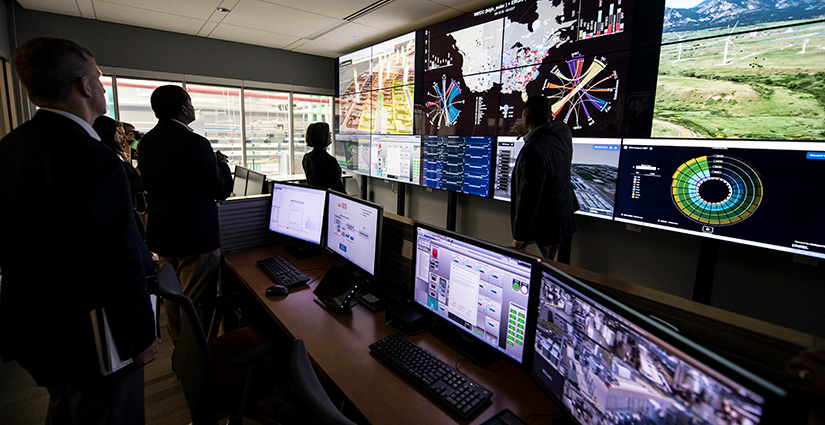Power System Model Results Made Easier
NREL Releases Two-Part Guide to Understanding Power System Model Results for Long-Term Resource Planning

"It can help everybody because it should lead to better decisions in the end."
That is the goal of a new resource developed by the National Renewable Energy Laboratory (NREL), according to NREL energy analyst Wesley Cole.
The two-part informational guide, divided into beginner and advanced levels, can help planners and stakeholders understand power system model results and ask the right questions of utilities in developing integrated resource plans (IRP)—strategic road maps used by utilities to plan their future energy resources. The two-part guide is designed for people with varying degrees of knowledge of power system models and how they fit into the process of planning the grid.
"More people are engaging in the utility planning process than ever before," Cole said. "And many of these people are new to planning the grid with resources such as wind and solar, so helping them get up to speed to be able to engage productively is very valuable."
Solar and wind power are two of the fastest-growing sources of electricity capacity growth in the country. According to the United States Energy Information Administration, wind power generation in the United States increased 56% from 2018 to 2023, and solar generation grew by 158% in that time. NREL's 2023 Standard Scenarios mid-case projections show wind deployment could reach 770 gigawatts (GW) and solar deployment could reach 1,090 GW by 2050—a five- and tenfold increase over their current levels, respectively.
"That's a pretty big shift," Cole said. "Therefore, if the tools that are used to help with planning the grid haven't evolved to keep up with that, there will be some challenges."
Learning the Basics of Power System Models
Part one, the Beginner's Guide to Understanding Power System Model Results for Long-Term Resource Plans, is tailored toward people without technical backgrounds in power systems or electricity modeling. It provides an introduction to modeling as part of the grid planning process, a synopsis of the different long-term electricity planning models, and methods to develop questions for utilities based on their IRP modeling.
"There is a lot that goes into long-term power system planning," Cole said. "It can be challenging to understand where to start when you look at model results presented by a utility."
To ensure groups like utility commissions, state energy offices, community advocates, and local planners are effectively communicating their input on an IRP, the Beginner's Guide delves into three focus areas: assumptions in data, key model outputs, and methods.
The hope is that stakeholders with limited knowledge of how to interpret power system models can use the guide to discern what is important about the results and better engage with utilities in the planning process.
Taking It a Step Further: An Advanced Guide
Part two, the Advanced Guide to Understanding Power System Model Results for Long-Term Resource Planning, builds on the Beginner's Guide and dives deeper into three key topics: electricity demand evolution, demand-side resources, and resource adequacy.
Some models are projecting rapid growth in electricity demand between now and 2050 due to incentives for electrification under the Inflation Reduction Act. The Advanced Guide digs into best practices for resource planning when it comes to estimating future load and demand and provides links to additional resources for understanding both load forecasting and demand-side resource modeling. The latter may be more challenging for resource planners due to the complexities they present in the modeling itself. Factors such as distributed generation and energy efficiency contribute to the challenge of long-term planning because of their heterogenous and generally small-scale nature.
"Especially when you are dealing with the variability of wind, solar, and storage and how all the pieces of the system are going to work together, you have to rely more on the model tools," Cole said. "So understanding how they work and whether or not they are up to the challenge becomes all the more important."
The guide also explains resource adequacy—the power system's ability to meet customer demand, considering planned and unplanned disruptions on the grid. Resource adequacy has been top of mind for planners and operators, in no small part due to recent major outages caused by extreme events such as Winter Storms Uri and Elliott. The guide lays out how stakeholders can define metrics, resource values, and incorporate high-quality data for future events into their plans.
Read the Beginner's Guide and Advanced Guide to understanding power system model results for long-term resource planning. Learn more about NREL's energy analysis and grid research.
Last Updated May 28, 2025
